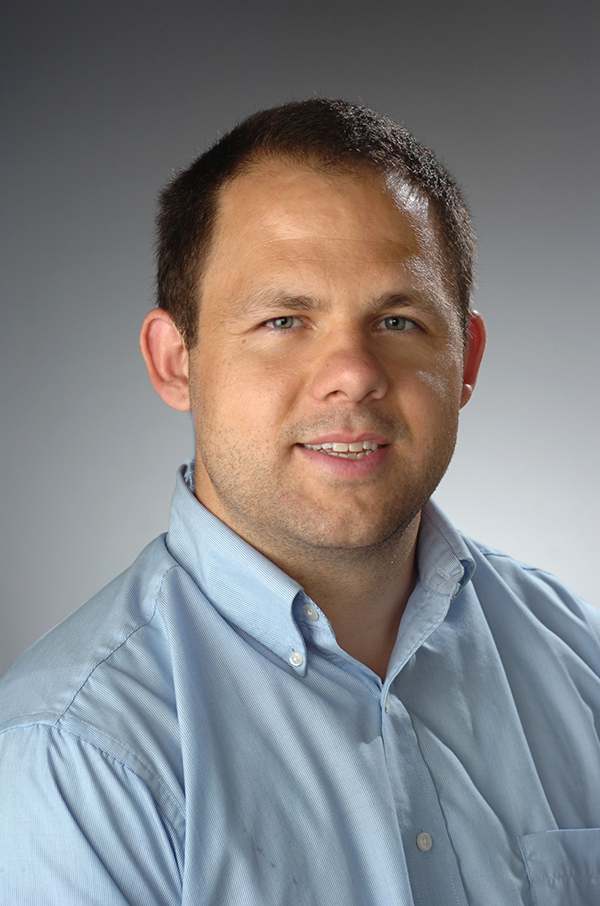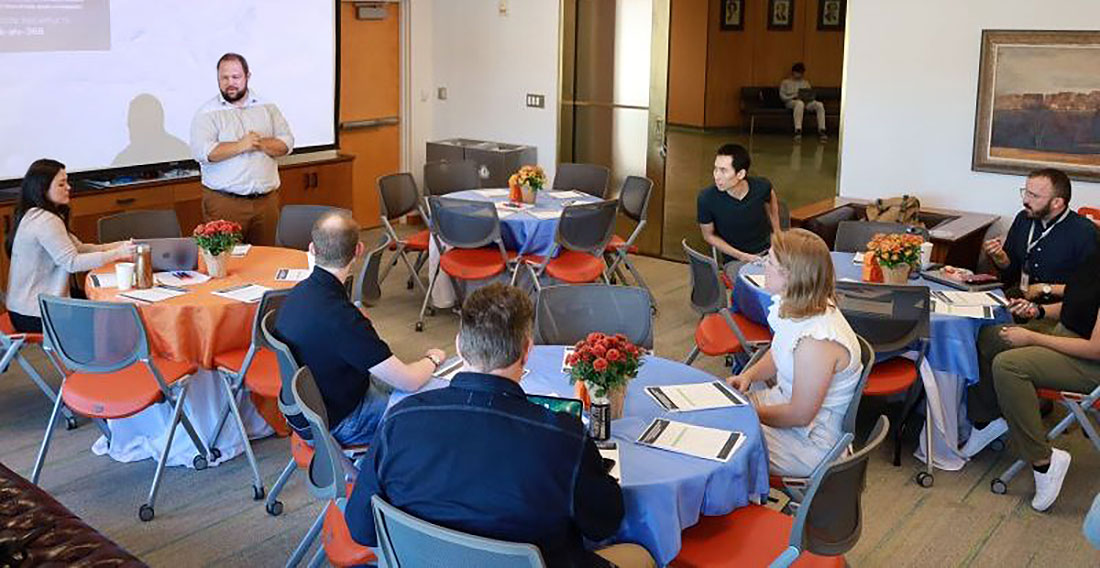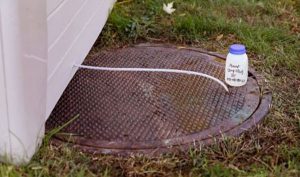The New York State Wastewater Surveillance Network, which began as a pilot project led by Syracuse University faculty member David Larsen in the early days of the COVID-19 pandemic, will soon support communities nationwide—and potentially around the globe—to detect and minimize the spread of infectious diseases.
The network’s expanded reach is the result of its recent designation as a Centers for Disease Control and Prevention (CDC) Northeast Region Center of Excellence. The designation recognizes the network’s exemplary performance in the early detection and monitoring of communicable diseases as well as the innovative research coming from Larsen’s group. It also provides the new Center of Excellence with $1 million in CDC funding. Approximately $500,000 of that amount will support the University’s continuing affiliated operations and research.

Larsen, public health department chair and professor in the Falk College of Sport and Human Dynamics, is gratified by the recognition, which is a nod to the program’s vast potential.
“I had a vision for the New York State Water Surveillance Network, but to be named a federal CDC Center of Excellence is just a real honor,” Larsen says. “What we’re doing now is building systems that will keep people healthier; operational processes that let people live more freely and improve the public health response are the ultimate goal.”
Larsen, members of his research team and their partner in the network, the New York State Department of Health (NYS DOH) and its Wadsworth Center, met earlier this month to formalize goals for their work with the CDC.
Early Response
Not long after COVID-19 was named a global pandemic, Larsen assembled a team of researchers from the Falk College, the College of Engineering and Computer Science, the SUNY College of Environmental Science and Forestry and SUNY Upstate Medical University to begin developing the wastewater surveillance technology that would eventually become critical to New York State’s response to the disease. The team built a grassroots network that included sewage treatment plant operators, lab technicians and public health program workers to collect sewage samples, test for coronavirus, and report and share results.
The initiative first benefited Onondaga County and the University and soon expanded through the NYS DOH partnership. Today, the New York State network operates in all 62 counties and covers a population of more than 15 million. Testing has expanded beyond COVID to aid response to polio, mpox, influenza, RSV, hepatitis A, norovirus and antimicrobial-resistant genes.
Essential Partnership
A total of $43 million, including $28 million from the CDC and $15 million from New York State, has already been invested in the state’s disease wastewater surveillance efforts, according to Daniel Lang, NYS DOH deputy director of the Center of Environmental Health. He says the program’s efficacy and extensive operational network distinguished it for selection as a CDC Center of Excellence.
“Our partnership with Syracuse University was essential right from the start of the pandemic,” Lang says. “We worked with Dave Larsen’s team to establish a comprehensive statewide wastewater surveillance program, an impressive tool we didn’t have before. It provides universal coverage to assess disease trends and detect where variants are popping up, plus a system that reports back to community participants. Now, we’ll be able to expand the expertise we’ve developed here to other jurisdictions around the country.”

Backenson says the CDC designation “shows that we are a leader in this, and it allows us the resources to train others in what we do. Now, we’ll be teaching other cities, counties and regions. We’re proud to be part of it.”
As the CDC Northeast Region Center of Excellence, the team’s work will support several New England states plus Puerto Rico and the U.S. Virgin Islands. The researchers and health officials also want to coordinate with the CDC’s five other wastewater surveillance Centers of Excellence comprising the National Wastewater Surveillance System. They plan to share research and offer education and training on their operating protocols, efforts that could benefit communities throughout the U.S. and potentially impact disease-detection
Global Potential
Larsen’s research on infectious disease surveillance and the public health response to these threats will also help people around the globe. He recently completed a Fulbright U.S. Scholar Award program in Austria at the Medical University of Innsbruck where he worked with the Austrian wastewater surveillance network. He also spoke about the approach at a technology roundtable at the White House last month.

Larsen’s team is now transitioning program operations to NYS DOH, which will permit the researchers to refocus on how these systems can support public health responses to infectious diseases and “dive deeper to maximize the benefits of the systems,” he says.
Public health functions dealing with infectious disease surveillance alert us to when a community is at increased risk and also confirm when a community is no longer at risk,” Larsen says. “Wastewater test results provide awareness of both aspects and key information needed to decide whether to close down community operations or keep them open and operating. Wastewater is a great way to gauge these elements and may be one of the most cost-effective ways to confirm levels of community risk.”
A Syracuse University News story by Diane Stirling originally published on Sept. 24, 2024.
